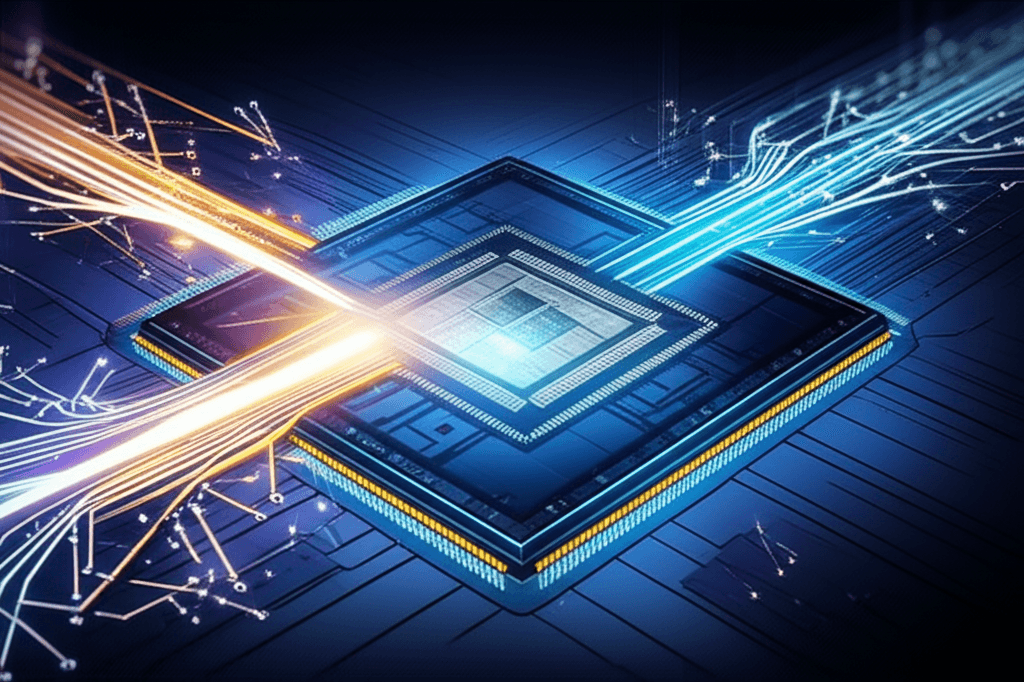Cerebras Slashes AI Reasoning Time 100x: Minute to Seconds
Unlocking real-time AI: Cerebras's wafer-scale chip and Alibaba's Qwen3 model make complex reasoning tasks virtually instantaneous.
July 9, 2025

In a significant leap for artificial intelligence, the AI hardware firm Cerebras Systems has announced a dramatic reduction in the time required for complex AI reasoning tasks. By deploying Alibaba's powerful Qwen3-235B model on its specialized hardware, Cerebras has slashed processing times from a full minute on conventional GPU-based systems to a mere 0.6 seconds.[1][2][3] This hundredfold increase in speed is poised to unlock new possibilities for real-time AI applications, particularly in enterprise settings where speed and efficiency are paramount. The core of this achievement is an output rate of 1,500 tokens per second, a metric that fundamentally alters the practicality of deploying large, sophisticated reasoning models.[4][2]
The key to this performance breakthrough lies in Cerebras's unique hardware architecture, centered around its Wafer-Scale Engine (WSE).[5] The latest generation, the WSE-3, is a colossal chip that contains 4 trillion transistors and 900,000 AI-optimized cores.[6] Unlike traditional systems that rely on clusters of graphics processing units (GPUs) which must communicate with external memory, Cerebras's design integrates a massive 44 gigabytes of on-chip SRAM memory.[7][6] This architecture eliminates the so-called memory bandwidth bottleneck, which is a major constraint in conventional systems where the processor often sits idle waiting for data to be fetched from slower, off-chip memory.[5] By keeping an entire large language model's parameters stored directly on the single, wafer-sized chip, Cerebras systems can perform calculations at a much faster rate, a capability that has now been demonstrated to be 20 times faster than GPU-based solutions in some cases.[8][9] This design not only accelerates processing but also simplifies the programming workflow, as developers do not need to write complex code to distribute a model across numerous GPUs.[6]
The deployment of the Qwen3-235B model, a frontier AI model developed by Alibaba, is a critical component of this announcement.[4] This model, which features 235 billion parameters, is recognized for its advanced reasoning and code-generation capabilities, rivaling other top-tier models.[4] Reasoning in AI involves a model performing step-by-step computational "thought" processes to arrive at a more accurate and nuanced answer, a task that is notoriously slow and computationally expensive on traditional hardware.[4][2] The combination of Qwen3's sophisticated mixture-of-experts architecture and the sheer speed of the Cerebras platform makes complex tasks like deep retrieval-augmented generation (RAG) and intricate coding assistance nearly instantaneous.[4][3] Furthermore, Cerebras has expanded the model's context window to its maximum of 131,000 tokens, allowing it to process and reason over vast amounts of information, such as dozens of files or tens of thousands of lines of code simultaneously.[4][10] This enhancement transforms the model from a tool for simple tasks to a platform capable of production-grade application development.[4][10]
The implications of this speed-up are far-reaching for the AI industry. For enterprises, the ability to get near-instantaneous answers from a powerful reasoning model changes the economic and practical calculus of deploying AI.[11] Workflows in sectors like finance, healthcare, and software development, which rely on analyzing large datasets or codebases, can be dramatically accelerated.[5] For instance, a coding task that might take 22 seconds on a competitor's platform can be completed in just 1.5 seconds on the Cerebras system.[12] This leap in performance also comes at a significantly lower cost, with Cerebras offering access to the Qwen3-235B model at a price point that is reportedly one-tenth that of comparable closed-source models.[4][10] This combination of speed and cost-effectiveness is designed to challenge the market dominance of established players like NVIDIA and make powerful AI more accessible.[4][13][14] The move also enables the development of more advanced and responsive AI agents and copilots that can interact with users in real time, without the frustrating delays currently associated with complex queries.[3][15]
In conclusion, Cerebras's achievement represents more than just an incremental improvement in processing speed; it marks a fundamental shift in the capabilities of commercially available AI. By pairing a leading open-source reasoning model with its revolutionary wafer-scale hardware, the company has effectively eliminated the latency bottleneck that has long hampered the real-world application of the most powerful AI models.[4][11] This development not only sets a new benchmark for AI inference performance but also paves the way for a new generation of intelligent, real-time applications that can reason and generate complex outputs at the speed of human thought. The ability to perform what once took a minute in less than a second will undoubtedly accelerate innovation and broaden the adoption of sophisticated AI across a multitude of industries.[4][3]